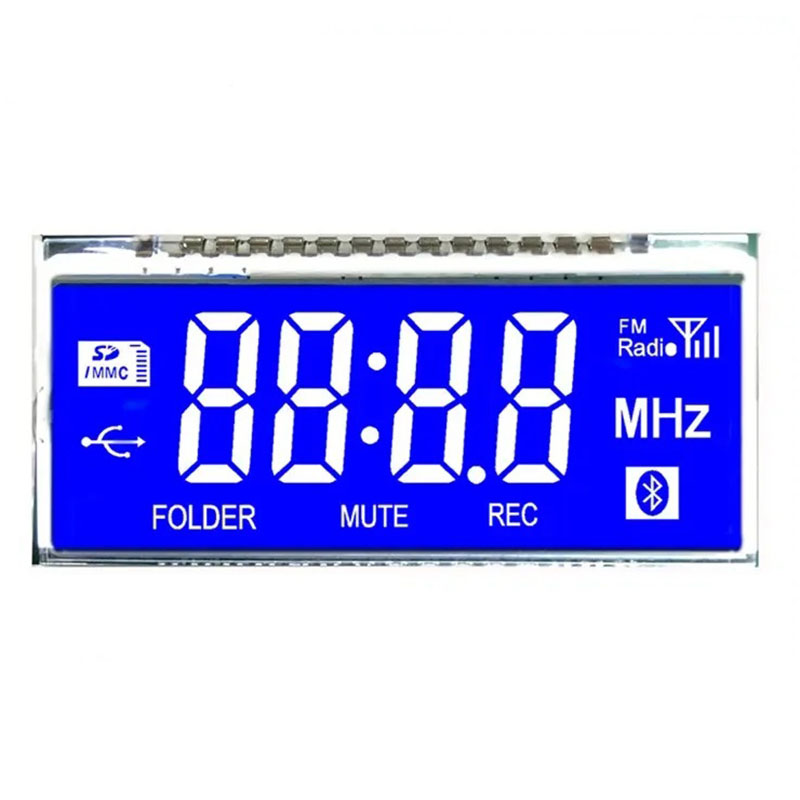In the world of electronic devices, displays play a crucial role in how users interact with technology. Among the various types of displays available, LCD (Liquid Crystal Display) technology has become a popular choice, especially in applications like smart meters. This article will explore the differences between LED and LCD displays, and provide guidance on how to choose the right LCD display for smart meters.
What is an LCD Display?
An LCD display utilizes liquid crystals to produce images. These crystals are sandwiched between two layers of glass or plastic, and when an electric current is applied, they align in such a way that they either block or allow light to pass through. This technology is widely used in various devices, from televisions to smartphones, and is particularly favored for its ability to produce sharp images with low power consumption.
What is the Difference Between LED and LCD Displays?
While the terms LED and LCD are often used interchangeably, they refer to different technologies. The primary difference lies in the backlighting method used in the display.
Backlighting:
LCD Displays: Traditional LCDs use fluorescent lamps for backlighting. This means that the colors and brightness of the display can be less vibrant compared to LED displays.
LED Displays: LED displays are essentially a type of LCD that uses light-emitting diodes (LEDs) for backlighting. This allows for better contrast, deeper blacks, and more vibrant colors. Additionally, LED displays can be thinner and lighter than traditional LCDs.
Energy Efficiency:
LED displays are generally more energy-efficient than traditional LCDs. They consume less power, which is a significant advantage for battery-operated devices like smart meters.
Color Accuracy and Brightness:
LED displays tend to offer better color accuracy and brightness levels compared to standard LCDs. This is particularly important in applications where clear visibility is essential, such as in outdoor environments.
Lifespan:
LED displays typically have a longer lifespan than traditional LCDs, making them a more durable option for long-term use.



How to Choose an LCD Display for Smart Meters
When selecting an LCD display for a smart meter, several factors should be considered to ensure optimal performance and user experience.
Size and Resolution:
The size of the display should be appropriate for the intended use. A larger display may be easier to read, but it should also fit within the design constraints of the smart meter. Resolution is equally important; higher resolution displays provide clearer images and text, which is crucial for displaying data accurately.
Brightness and Contrast:
Since smart meters may be used in various lighting conditions, it is essential to choose a display with adequate brightness and contrast. A display that can adjust its brightness based on ambient light conditions will enhance readability and user experience.
Power Consumption:
Given that smart meters are often battery-operated or rely on low power consumption, selecting an energy-efficient LCD display is vital. LED-backlit LCDs are typically more power-efficient than traditional LCDs, making them a better choice for smart meters.
Durability and Environmental Resistance:
Smart meters are often installed outdoors or in harsh environments. Therefore, the chosen LCD display should be durable and resistant to environmental factors such as moisture, dust, and temperature fluctuations. Look for displays with protective coatings or enclosures that can withstand these conditions.
Viewing Angle:
The viewing angle of the display is another critical factor. A wide viewing angle ensures that the information on the display can be read from various positions, which is particularly important in public or shared spaces.
Touchscreen Capability:
Depending on the functionality of the smart meter, a touchscreen LCD display may be beneficial. Touchscreen interfaces can enhance user interaction and make it easier to navigate through different settings and data.
Cost:
Finally, consider the budget for the LCD display. While it is essential to invest in a quality display, it is also important to find a balance between performance and cost. Evaluate different options and choose a display that meets the necessary specifications without exceeding the budget.
Post time: Nov-29-2024

